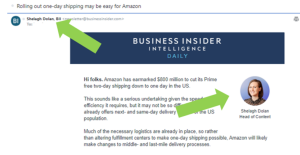SEO is an ever-changing world. Every marketer knows this (or at least should). The wise marketer will realize that many of the changes are refinements in a continual evolution. The most recent release announced just last month, coined as the Google Pigeon update turns the spotlight on local search. The focus on natural content and user experience that has become part of our world especially since the Google Hummingbird release is also visible in the Pigeon update.
 What is the Goal of the Google Pigeon Update?
What is the Goal of the Google Pigeon Update?
Google Pigeons goal is to boost small, local business abilities to be found in local searches, helping them to compete against the larger, national brands with marketing budgets seemingly bigger than some local business complete annual profits. It is, essentially, an attempt to level the playing field in the world of local search.
How Can Local Businesses Take Advantage of Google Pigeon?
There are several things that small businesses can do to respond to the Google Pigeon update. None of them are overly complex but they will require some time and good oversight to ensure consistent implementation.
Following are three things that local businesses should do to make the Pigeon update work for them, rather than against them:
1. Claim and Optimize All Listings
Businesses may *think* that they know everywhere their business information shows up on the Internet but assuming such things is the best way to …well, you know. Now is the time that local businesses should put claiming and optimizing all online listings at the forefront of their activities.
This includes business directories, indexes, social media profiles, Google maps and Google+ local. It is essential that all information appear consistently across all of these places and that it be complete. Certainly NAPs are of primary importance but if other information can be added and is not, that could now hurt a business in search results. Everything that can be filled out should.
2. Optimize for Local
Every content element that is a main business identifier should include product or service as well as local information. H1s, title tags, alt tags, image tags and more should be edited to include a region, city or even neighborhood as appropriate (so long as the neighborhood is substantial enough to be searchable on its own, like SOHO in New York City).
While adding geo information, it remains important that businesses maintain natural verbiage flow to all such headers or tags. Vegan Portland Restaurant, for example, should not be used. Vegan Restaurant in Portland is likely to garner far better SEO results because it is a more natural phrase.
3. Clean Up Links
A messy backlink profile can hurt a local business in the wake of the Google Pigeon update. Broken links as well as low-quality links should be identified and fixed. The number of links matters far less than does the quality of each link and the cleanliness of the overall profile.
It should be remembered that every business directory listing, social media profile or index listing is a backlink. This makes the combination of listing optimization and link cleanup quite powerful for small businesses.
The Time is Now
Google Pigeon is here so that means businesses should not wait to address this new algorithm. The Pigeon update really does represent ripe opportunity for businesses willing to spend the time to enhance their local searchability.
Post from: Search Engine People SEO Blog
How Small Businesses Should Respond to the Google Pigeon Update
—
Written by Chris Marentis, Surefire Social
The post How Small Businesses Should Respond to the Google Pigeon Update appeared first on Search Engine People Blog.
(398)









